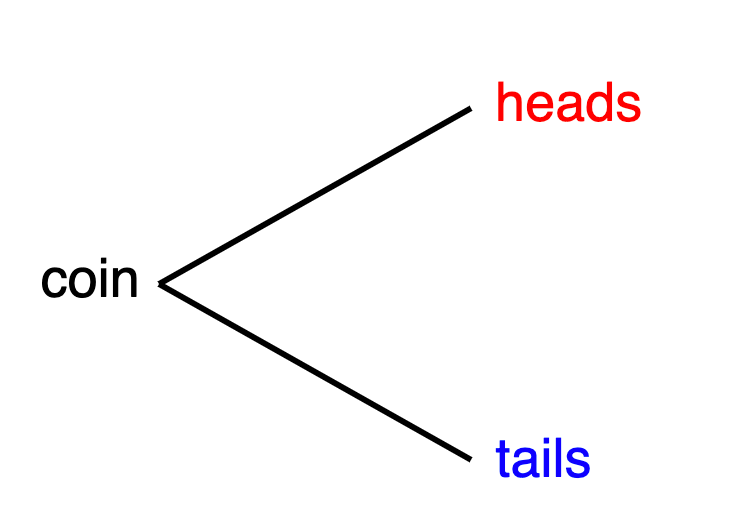Flipping Coins
In this lesson, we will discuss a common problem with random variables: flipping coins.
We'll cover the following...
Flipping once #
Now that we have discussed random number generators, let’s look at the most common example used in probability: flipping a coin.

Let’s flip a coin 100 times and count the number of heads, denoted by 0, and the number of tails, denoted by 1:
Python
import numpy as npimport matplotlib.pyplot as pltimport numpy.random as rndflips = rnd.randint(0, 1+1, 100) #generating random numbers between 0 and 1headcount = 0tailcount = 0for i in range(100):if flips[i] == 0:headcount += 1else:tailcount += 1print('number of heads:', headcount)print('number of tails:', tailcount)
First of all, note that the number of heads and tails adds up to 100. Also, note how we counted the heads and tails. We created counters headcount and tailcount, looped through all flips, and added 1 to the appropriate counter. Instead of a loop, we could have used a condition for the indices combined with a summation, as follows:
Python
import numpy as npimport matplotlib.pyplot as pltimport numpy.random as rndflips = rnd.randint(0, 1+1, 100)headcount = len(flips[flips == 0]) #length of array with zerostailcount = len(flips[flips == 1]) #length of array with onesprint('number of heads:', headcount)print('number of tails:', tailcount)
In lines 6 and 7, we use == condition on the array flips ...
Ask